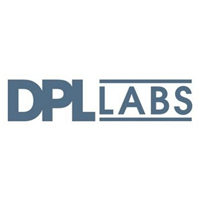Click here to read the article on CEPro.com
HDMI corner BY DPL LABS
AS HDMI 2.1 data rates soar into the land of 48Gbps on top of all the interface’s ancillary communications duties, the need for more comprehensive designs and engineering has become more important than ever.
Integrators can relate to this as they go about designing and engineering their sophisticated projects, attempting to make sure everything works together smoothly. DPL experienced this recently with the process and completion of our new rigid 48G Reference Standard testing and certification platform now ready for launch. Electronics projects must have a defined roadmap from start to finish that includes design reviews, even if the project is manufacturing cables.
With HDMI it doesn’t always seem to happen that way. When the interface entered into the market back in the 5Gbps days, most cable manufacturers, in DPL’s opinion, were not typically aware of how important their job was until integrators all experienced those days of “Plug and Pray” due to interoperability issues. That situation was a major disruption to the consumer electronics industry for manufacturers, dealers, and especially integrators and their customers. On the other hand, it led me to push DPL and CE Pro to spotlight product testing, common problems, and potential system design pitfalls in this column for almost 10 years now.
As the interface expanded its data rate so did the amount of reported interoperability problems, which only made it that much more intriguing to investigate. We knew why it was happening, we just didn’t know how. We all assumed at the time that the cable manufacturers in Asia were all up to speed … only to discover this was not always the case when we started working with companies there. In many cases, visits to Asia turned up sites where there was little to no engineering and only the real devoted cable brands were demanding such a high level of product.
Case in point, while visiting a cable manufacturer we were introduced to an employee whose job it was to keep the facility clean and in proper order. Nice guy and he worked extremely long hard hours. Two years later, when we again visited that factory, we met their chief engineer. Guess who it was? Yep, it was the same maintenance guy. Get the picture? That is when we realized many products are just “thrown over the fence” with limited R&D for many brands to pick up and sell. Unfortunately, we are still experiencing this only now in the active optical cable (AOC) world we live in.
There are times when manufacturers will send in products for pre-test not having any clue if that product meets its stated claims. Just keep throwing them over the fence, we may get lucky! Well, maybe, but it is a crapshoot at best. It’s kind of like using a food recipe where it may state to use a half a teaspoon of this, a “dash” of that, and two tablespoons of another ingredient. And the half teaspoon turns into more like three-quarters, the dash becomes a pinch and the two tablespoons turn into two and a half. It can still turn into a great dish but when it comes to HDMI it’s a recipe for disaster. There is just not that much wiggle room.
We recently had samples from one cable provider claiming all had 48G throughput.
There were five models — two were on the edge of making it to 18G, two were strong at 18G, and one made it to 32G.
So, is this what we have to settle for with product expectations?
If the signaling is determined to be poor, Link Training may even drop the system down to old TMDs format with only three lanes of video and 18Gbps — taking the system down to v2.0 performance.
The jury is still out on whether the display manufacturers will show this information on the screen. But whether they do or do not, it still can raise issues. If they do and customers can see they are not getting what they paid for, questions will need to be answered. On the other hand if no information is displayed the user will most likely never know. How will this be handled when it comes time for cable specifications?
Integrators may have all good intentions to provide the best system money can buy for their customers, but if for some reason the interface claims 48G and does not support it the system will suffer and drop into a lower performance level. Then who is liable? Testing these products both before and during production will be important. We see changes all the time after products are produced.
The nice thing is that the system will work, but you may want to do diligence and make sure it can perform as specified for all the above reasons. New in-field generators should be available to help with this, plus DPL’s new 48G Reference Standard testing is designed to guarantee such performance levels and minimize most of these threats.


0 Comment